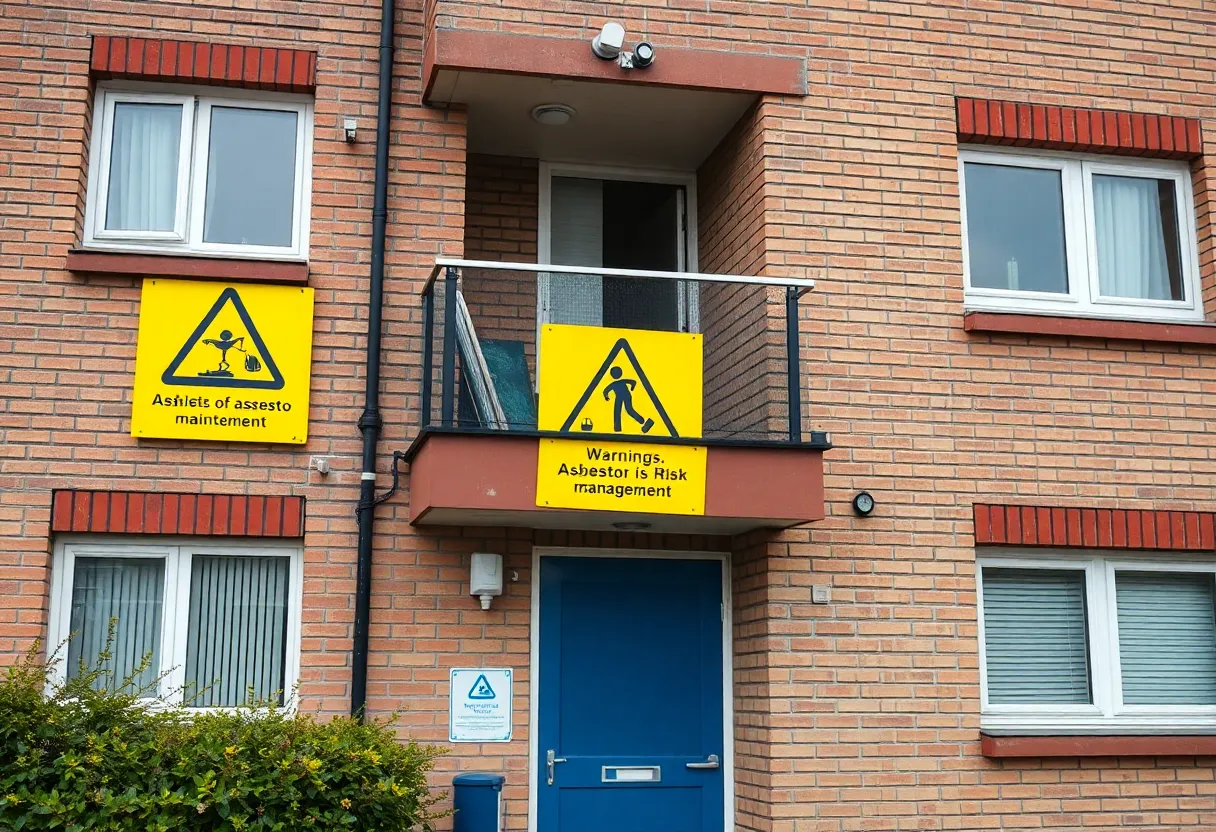News Summary
A housing association has revealed over 800 inaccuracies in its asbestos risk data, following an investigation by the Housing Ombudsman. This alarming finding stems from a resident’s plea regarding unsafe living conditions linked to prolonged repair delays and inadequate asbestos management practices. The association has committed to improving its safety protocols and data accuracy as it grapples with the implications of these serious lapses in tenant safety.
Housing Association Discovers Over 800 Asbestos Risk Errors
In a startling revelation, a housing association has uncovered more than 800 instances of incorrect asbestos risk data within its records. This discovery came about following a thorough investigation led by the Housing Ombudsman, which pointed to severe maladministration tied to record-keeping practices concerning property repairs and the management of asbestos hazards.
Chronicles of Neglect: A Resident’s Plea
The investigation originated from a desperate plea by a resident who endured a leak and a collapsed ceiling in her home. The prolonged delay in completing the necessary repairs—spanning an astonishing 14 months—served as a primary trigger for the examination into the association’s operational protocols. When reviewing the affected property, it became alarmingly clear that the landlord did not maintain accurate and up-to-date records concerning the presence of asbestos material.
A Disturbing Lack of Risk Assessment
One glaring issue identified was the absence of a proper assessment of the asbestos condition in the property post-collapse. The landlord was unable to substantiate whether the family affected by the incident was ever considered for temporary relocation while repairs were pending. This lack of proactive measures further emphasized the association’s serious lapses in hazard management and overall tenant safety.
Flawed Risk Scoring System Exposed
Among the most troubling findings from the review was a flawed risk scoring system that inaccurately categorized numerous properties. Several were marked as no-risk due to the absence of vital data, while others were erroneously tagged as high-risk without proper validation or data cleansing. Such discrepancies highlight a troubling trend in the management of data related to the presence and risks of asbestos in public housing.
Data Management Struggles
The investigation attributed these issues to a combination of factors, including a transition of services from external providers to in-house management and a pervasive lack of information management. A major concern was that new information was added without adequately updating existing records following the switch to a new system, further compounding inaccuracies and potential dangers for tenants.
Steps Towards Improvement
In response to this distressing report, One Housing has committed to significant changes. The association is undertaking a comprehensive review of its asbestos safety management plan and operational guidelines. As part of these improvements, two administrative positions have been created specifically designed to oversee asbestos databases, ensuring that records are not only accurate but also reflective of real-time conditions.
Learning from Mistakes
The Housing Ombudsman expressed concern over the distress inflicted upon the resident due to the combined impact of the ceiling’s collapse and the associated asbestos risk. This unfortunate situation serves as a critical learning opportunity for landlords in terms of implementing effective hazard management protocols. Knowledge management has been identified as foundational to enhancing service quality and responding to complaints effectively.
Broader Concerns in Housing Safety
This alarming incident at One Housing is not isolated; broader issues exist in both public and private housing sectors. For instance, there are ongoing concerns regarding the construction of a new Memorial Sloan Kettering cancer care facility in Manhattan, where the potential exposure to toxic materials, including asbestos, is causing significant unrest among nearby residents. Parents in the area are vocally petitioning for independent oversight and additional safety measures to ensure that asbestos removal and other hazardous procedures are strictly regulated.
Widespread Maintenance Concerns
The situation within New York’s low-income private housing sector further complicates the discourse around safety management, with many residents lacking access to basic necessities. This situation is exacerbated by ongoing disparities in living conditions between the New York City Housing Authority (NYCHA) and privately managed low-income housing. Reports indicate a pressing need for stringent code enforcement to elevate living conditions and ensure the safety of vulnerable populations.
Conclusion: The Essential Path Forward
As One Housing grapples with the ramifications of the Ombudsman’s findings and implements urgent changes, it’s incumbent upon all housing associations to re-evaluate their records and safety practices. Ensuring transparency and accountability in housing management is essential for safeguarding the health and well-being of residents, especially those in vulnerable positions. With ongoing issues surrounding asbestos management and overall tenant safety, continuous vigilance and proactive measures will be crucial moving forward.
Deeper Dive: News & Info About This Topic
HERE Resources
The Dark Legacy of Asbestos: Unraveling the Crisis
Ombudsman Review Reveals Asbestos Mismanagement in Housing Association
Montana House Moves to Shield Corporations From Asbestos Liabilities
Disaster from the Skies: The Lingering Health Crisis from 9/11
Daughters Seek Answers Following Father’s Tragic Death from Asbestos-Linked Cancer
The Rising Financial Storm of Mesothelioma: How Patients are Fighting Back
Major Developments in Asbestos Regulation Spark Controversy
New Asbestos Management Report Sparks Debate on Regulatory Changes in NSW
Trial Commences in Fort Lauderdale Over Mesothelioma Case Linked to Asbestos Exposure
New Bill in North Carolina Aims to Support Firefighters Facing Cancer Risks
Additional Resources
- New York Post: Upper East Side Kids Exposed to Asbestos Risks
- Wikipedia: Asbestos
- New York Times: Radical Plans for Public Housing
- Google Search: Asbestos Hazards in Housing
- York Dispatch: York County School Districts Receive Funds for Asbestos Removal
- Google Scholar: Housing Authority Asbestos Management
- City & State NY: Living Conditions in Private Low-Income Housing
- Encyclopedia Britannica: Public Housing Conditions



















